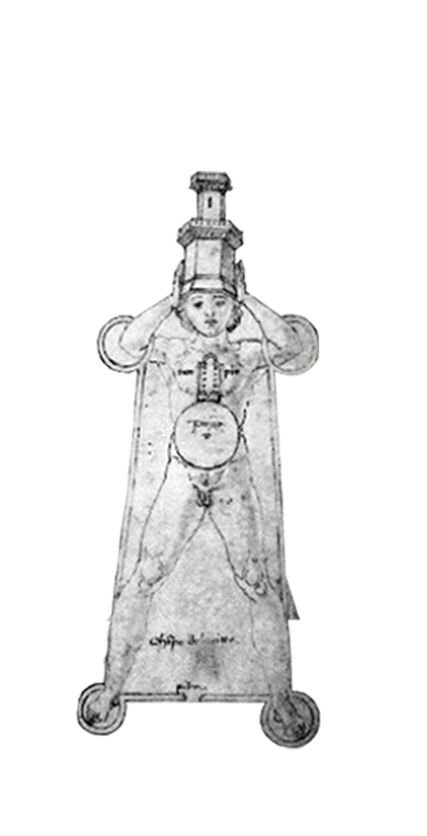
Twice, that splendid castle was cruelly razed. But as late as the 15th century, 'Poggio Imperiale' still remained strong in memory. Thus, in 1488, Lorenzo de' Medici chose the site for the forward defences of Florence against Siena, reawakening the proud hearts of place and people. Lorenzo il Magnifico commissioned the master architect Giuliano da Sangallo for design of the defences, but also for planning of an 'ideal city', commensurate with a new concept of the human dimension. Today we can admire the majesty of these Renaissance walls, not for their evocation of war, but for their communication of eternal splendour and beauty.
According to this theory, expressed by the Sienese artist Francesco di Giorgio Martini (1439-1501), man and his works are a reflection of an entire superior order: each is an entity, containing within it the elements that compose the entire world.
In 'Vitruvian man', Da Vinci places the limbs in a series of hypothetical relations with the body, creating proportions that become a reference for the measure and representation of any human figure, in his subsequent anatomical studies and major works.


Da Vinci's study concerns the Divina Proportione, or 'golden ratio': the mathematical expression of the most aesthetically pleasing and harmonious proportions. Since the time of his works, the golden ratio has become the rule of beauty for all creative compositions, from architecture to painting.
The Divina Proportione remains the key to the mysteries of beauty, whether natural or man-made… and the inspiration for the Divina Fortezza
Why is this place so unusual ? The Fortezza di Poggio Imperiale, or Cassero di Poggibonsi, with its beautiful pentagonal form, is a work constructed according to the Divina Proportione. The fortress materialises the marvels of Vitruvian theory, as first elaborated by Da Vinci and Di Giorgio Martini: a setting that celebrates man, with woman, as the centre of the Universe.